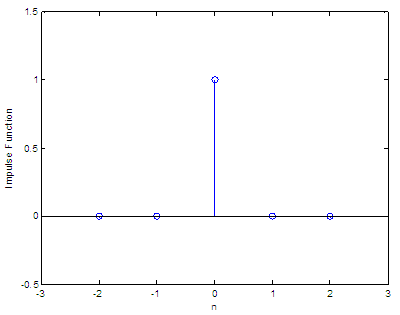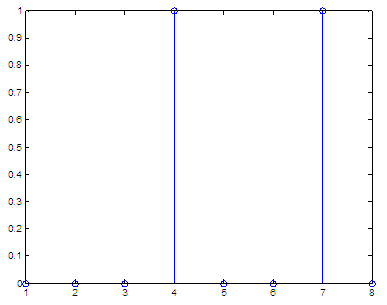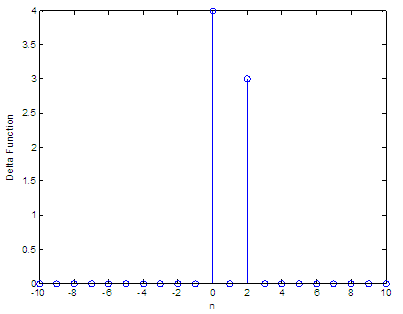

Impulse function - Dirac DeltaThe
‘Impulse function’
is also known as the ‘Dirac
delta’ function, or δ function (it was
introduced
by
physicist Paul Dirac). In the context of digital signal processing
(DSP) it’s
often referred to as the ‘unit
impulse function’.
The
Dirac delta is not strictly a function, because any real function that
is equal
to zero everywhere but at a single point must have a total integral
equal to zero,
but for many purposes this definition can be manipulated as a function. Let’s
create some discrete plots using Matlab function 'stem'.
We can
define the function having a scalar as an input. For example: function y =
dd1(n) %
The function is 1 only if the input is 0
n = -2 : 2
for i = 1 :
length(n) The
result, as expected, is:
Now,
let’s assume another vector: n = [1 2
3 0 2 5 0 1]
for i = 1 :
length(n) The result is:
Now,
let’s say that we have a vector (not a scalar) as an input. We want to
calculate the unit function for all of the values included in the input
vector.
We can create another function ('dd') to considerate this approach: function y =
dd(x) %
We find indexes of input values equal to 0,
n = [1 2
3 0 2 5 0 1]
If we
want to calculate y = 4δ(n)
+ 3δ(n-2), in
a range of integers that go from -10 to 10, we can do
simply this: n = -10
: 10 and the
result is:
We can see that every term in the function only counts as one stem, and that happens when the argument is zero. The first term, 4δ(n), has a height of 4 (coefficient) at n = 0; the second term, 3δ(n-2), has a magnitude of 3 (coefficient) at n = 2. From 'Impulse Function' to homeFrom 'Impulse Function' to 2D-plots Menu
|






